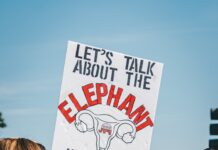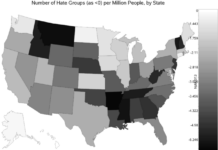Over the last two decades, 24 states have legalized medical marijuana. In Florida, there was a favorable buzz surrounding Amendment 2 ? the constitutional amendment that would have legalized medicinal use of cannabis. The numbers on election night looked strong. The majority of voters supported the amendment and it received 57.6 percent of the votes in favor of legalization for certain medical conditions. However, the 3.3 million voters that said yes did not create a supermajority and the amendment failed.
Amendment 2 – 2014 Results from the Florida Division of Elections
Proponents took to social media asking why? How did this happen? Why don’t we just need a majority vote to pass this amendment?

The answer goes back to 2006. Prior to that midterm election, amending the Florida Constitution required a majority of the vote, which translated to 50?percent?+1. Consequently, there was a plethora of proposed amendments in each election, including amendments to limit class sizes in our schools, increase the state’s minimum wage to make life more livable in the sunshine state, providing universal pre-k to all children, and yes, even regulating gestational crates for pregnant pigs. Those in favor of the 2006 Amendment 3 for the supermajority, which ironically passed with fewer votes than it requires for future amendments (see below), used the pig crate issue and the ?bullet train? as an example of the ?frivolous? amendments making their way to the ballot.
Amendment 3 – 2006 from the Florida Division of Elections

The fact is, these types of measures would not be sought after if the state legislature was?actually doing its?job. Laws and regulations should be addressed by the representatives we elect to do so. When they fail to perform these important functions, and blatantly ignore their constituents on issues like humane treatment of animals or humane treatment of people (like legalizing medicinal marijuana); they leave ?we the people? no other choice but to seek a vote from the general populous.
Supermajority requirements for state referendum ballot measures chip away at the power of the public, as clearly seen in Florida on Tuesday night. Eight years ago, we were told the intent of the supermajority amendment.?Bob Graham warned us about the ramifications of the 2006 amendment in a piece he wrote for The St. Petersburg Times.
?Now, an amendment on the November ballot threatens to take away your fundamental right to a government by, and for, the people. A group of big businesses is pushing this very bad constitutional amendment – Amendment 3 – to shut down the people’s will.?
Warnings were also provided in?an article titled “Big business backs limits to Florida’s Constitution” from?The Orlando Sentinel.
?Although the corporations contributing to Protect Our Constitution [a PAC in favor of the supermajority] have considerable clout in the state Capitol, they have been stung by a number of successful citizens initiatives and threatened by many more.?
The Protect Our Constitution PAC, provided us a prophetic glimpse into the future with this campaign ad, eight years ago. They poked fun at measures ?we the people? elected, like demanding higher standards for animals on factory farms, and of course feeding the fear of higher taxes and legalized illicit drug use.
As irony would have it, a supermajority wasn’t needed in 2006 to pass the requirement to have one. As a result, we live with just a little a lot less liberty. Sadly, few truly remember why. Many think it is just the law of the land, not realizing that barely a decade ago, Florida voters were duped into giving up their megaphone. Perhaps the next initiative necessary for Florida voters is to seek out an amendment to end the supermajority requirement. Unfortunately, such an effort would need a supermajority to do so.
Let us know your thoughts at the Liberal America Facebook page. Sign up for our free daily newsletter to receive more great stories like this one.






